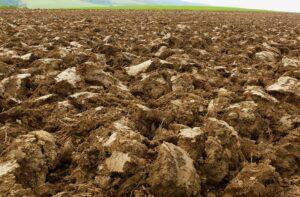Rules for preserving the productivity of our soils in the KAP
In the new EU support period between 2023 and 2027, the Common Agricultural Policy (KAP) offers Hungarian farmers a variety of options and choices – stated the State Secretary of the Ministry of Agriculture responsible for agriculture and rural development at a forum held in Bordány, Csongrád-Csanád county, on Wednesday evening.

(Photo: Pixabay)
In the new support system, the rules regarding crop rotation on arable land are changing. Zsolt Feldman indicated that one of the most important innovations of the CAP in the period until 2027 is the stronger consideration of green basic conditions. The requirements of correct agricultural and environmental conditions include, for example, the application of annual crop rotation for farms larger than 10 hectares. The basic purpose of the crop rotation rules is to preserve the productivity of the soil. In order to do this, the farmer – with a few exceptions – must grow a different crop every year on all his arable fields, but in a calendar year on at least one third of the arable area of the given farm compared to the previous year. This must be done in three consecutive years. This year there is still a temporary EU exemption for crops consumed directly as food, but self-cultivation of potatoes, sunflowers, rapeseed, soybeans, sugar beets, olive pumpkins and melons is not possible in 2023 either due to their biology and pests.
Mentioning the rules, the state secretary explained: hybrid corn seed can be grown in the same area for four consecutive years
A secondary crop grown between two main plants (even of the same species) is also considered a crop change, if the secondary crop belongs to a different plant family from both the main crop that precedes it and the main crop that follows it. The second sowing must be declared in the unified application, it must be sown after the main crop of the given application year, and it must be harvested, rotated or destroyed before the main crop of the following application year is sown. The area must be cultivated in such a way that the necessary soil preparation work can be carried out after harvesting the previous main crop and before sowing the next main crop.
The mentioned rules can be deviated from in the following cases
If the farm cultivates less than 10 hectares of arable land, if certified organic farming is carried out in the area, as well as on land covered with perennial arable crops (including temporary turf), arable crops grown in flooded cultivation (under water) and in areas left fallow. In addition to these, if more than 75% of the eligible agricultural area is permanent grassland and it is used for the cultivation of grassland or other annual fodder crops, or for the cultivation of plants that are flooded with water for a significant part of the year or crop cycle, or a combination of these. Furthermore, it is an exception if more than 75% of the arable land is used for the cultivation of lawn or other annual fodder crops, as fallow land (regardless of soil cover), for the cultivation of leguminous plants (except soybeans, as they cannot be grown by themselves), or for several of these purposes.
AM
Related news
AM: the Szupermenta product test program provides additional information for purchase
The National Food Chain Safety Office (Nébih) Szupermenta product test…
Read more >The Ministry of Agriculture has issued a notice on the use of ENAR data in support policy
In the case of animal-based subsidies financed from EU funds,…
Read more >Farmer-centric agricultural policy after 2027 receives unanimous support
The EU member states’ agriculture ministers have adopted Council conclusions…
Read more >Related news
Recognition of Consumer Protection Excellence: Honoring the Best of 2024
This year’s outstanding consumer protection officers and special award recipients…
Read more >The Joy of Giving! – SPAR stores collect non-perishable food for people in need
The Hungarian Maltese Charity Service and SPAR Hungary have launched…
Read more >KSH: industrial production decreased by 0.2 percent in October
In October, the volume of industrial production fell by 0.2…
Read more >








